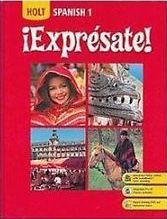
All Solutions
Page 251: 27
***estar/sentirse aburrido***
Therefore, we can say: *Vicente está aburrido* or *Vicente se siente aburrido.*
*Marta está enferma.*
If we wanted to say that she feels sick, we would use the verb *sentirse* (*to feel)*.
*Marta se siente enferma.*
*Leti tiene sed. (Leti is thirsty.)*
Don’t forget that “tener” has an **e –> ie** stem change in this form.
To say that he is nervous, we can use the verb *estar (to be)*:
*Ricardo está nervioso.*
We can also use the verb *sentirse (to feel)* and say that he feels nervous:
*Ricardo se siente nervioso*.
To say that Ricardo is afraid of public speaking, we have to use the collocation ***tener miedo a/de** (to be afraid of)*.
*Ricardo tiene miedo a hablar en público.*
Don’t forget that “tener” has an **e –> ie** stem change in this form.
*Leti tiene calor. (Leti is hot.)*
Don’t forget that “tener” has an **e –> ie** stem change in this form.
*Marta no se siente bien. (Marta doesn’t feel well.)*
Don’t forget that “sentirse” has an **e –> ie** stem change in this form.
*Vicente tiene sueño. (Vicente is sleepy.)*
Don’t forget that “tener” has an **e –> ie** stem change in this form.

